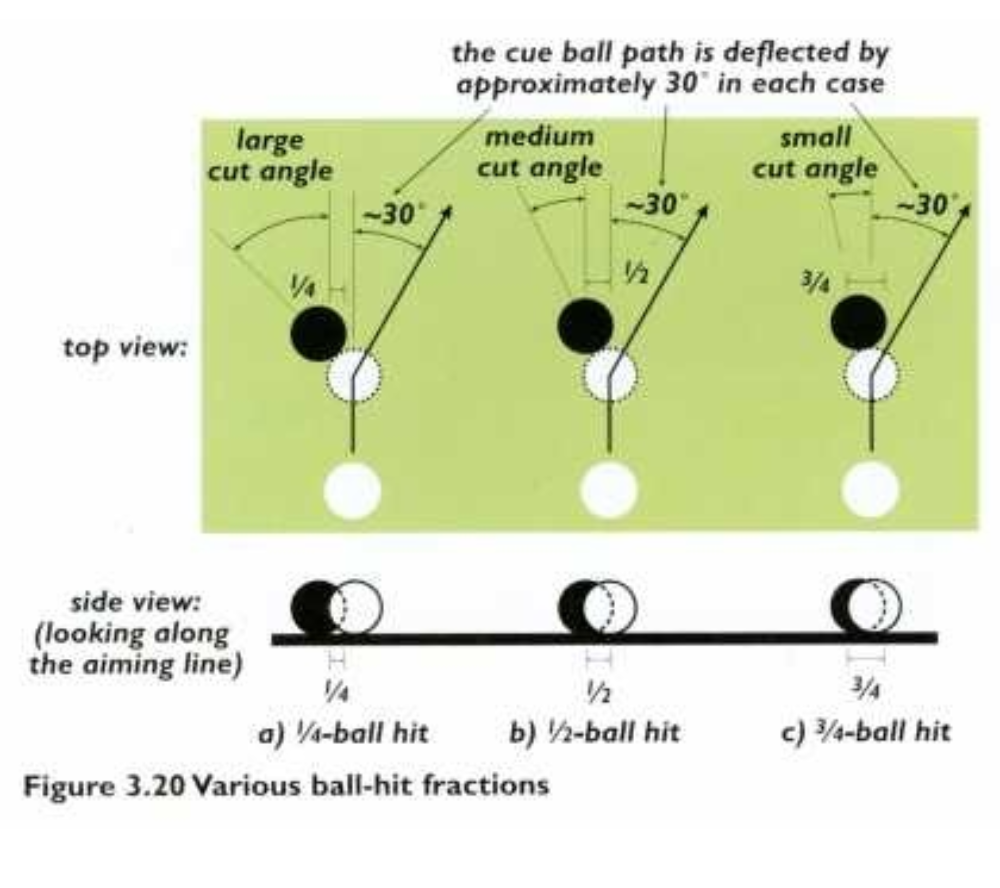Understanding Ball-Hit Fractions and Cut Angles
This diagram is about cue ball-object ball collisions and how different amounts of overlap (called ball-hit fractions) affect:
-
The cut angle – how sharply the object ball moves off the aiming line.
-
The cue ball deflection angle – how much the cue ball deviates after impact.

🔶 Top View (Bird’s-Eye View of the Table)
This shows three scenarios:
a) ¼-Ball Hit (Large Cut Angle)
-
The cue ball hits just the edge of the object ball.
-
Only ¼ of the cue ball contacts the object ball.
-
This causes a large cut angle — the object ball moves sharply sideways.
-
The cue ball deflects ~30° off the original path.
b) ½-Ball Hit (Medium Cut Angle)
-
The cue ball hits the centerline of the object ball.
-
The collision splits the angle between cue ball and object ball movement.
-
The cut angle is moderate.
-
The cue ball still deflects about 30° off the original path.
c) ¾-Ball Hit (Small Cut Angle)
-
The cue ball hits most of the object ball.
-
Only ¼ of the object ball is missed.
-
This results in a small cut angle, barely moving the object ball off the straight line.
-
Cue ball deflection remains ~30°.
🔷 Side View (Looking Down the Aiming Line)
This shows how much of the object ball is struck:
-
a) ¼-Ball Hit – Small overlap, nearly a glancing blow.
-
b) ½-Ball Hit – Direct, central hit.
-
c) ¾-Ball Hit – Strong hit, most of the object ball is covered.
This side view complements the top view by clarifying the impact zone.
📐 Important Insights
-
Cue Ball Deflection ≈ 30°
Surprisingly, the cue ball path is deflected by around 30° regardless of the hit fraction. This is a known concept in pool physics and helps players judge where the cue ball will go after contact. -
Cut Angle = Object Ball Direction
The more glancing the hit (¼-ball), the wider the object ball angle. The more direct the hit (¾-ball), the narrower the angle. -
Predictability
Understanding these hit fractions allows players to predict both object ball paths and cue ball motion — a critical skill for positioning in the next shot.
